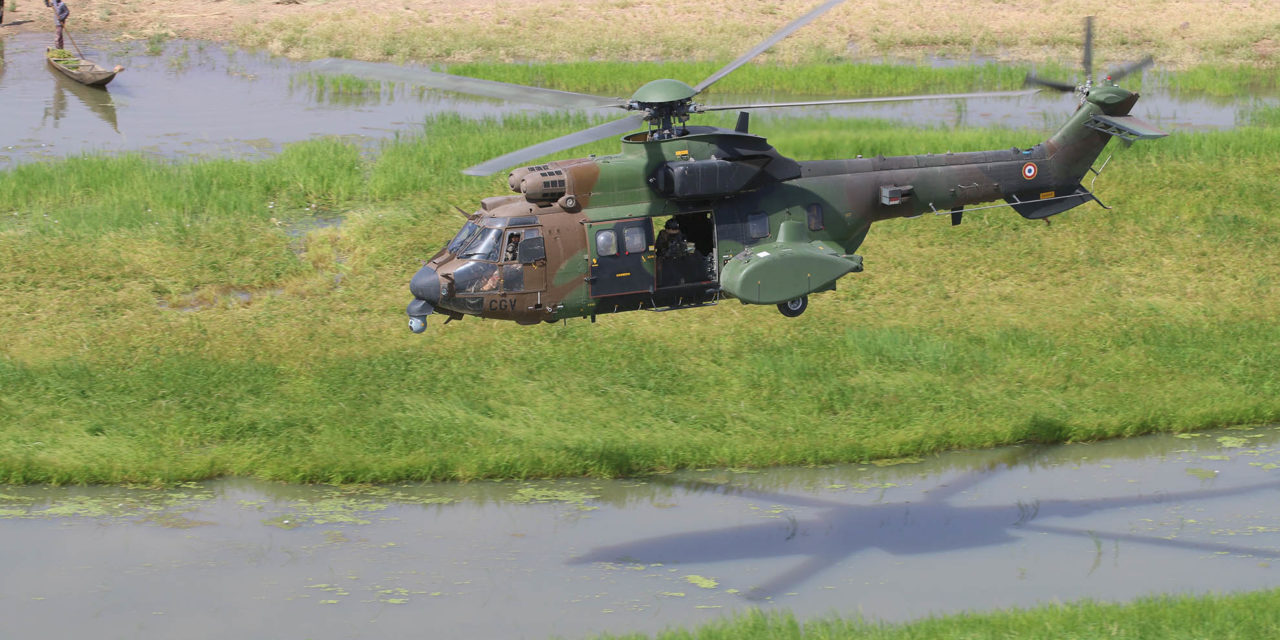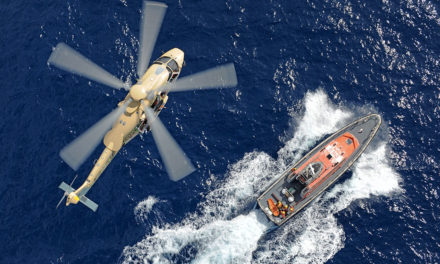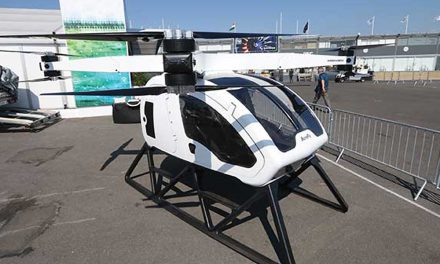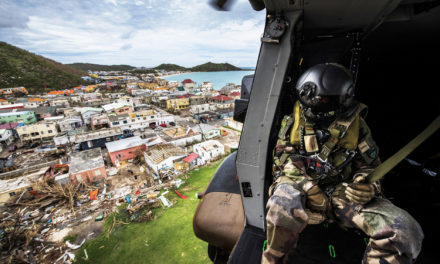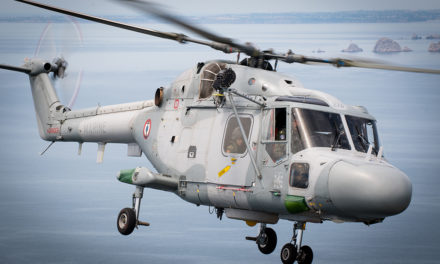The prototype of the Super Puma, designated AS332 in the nomenclature of what was then Aerospatiale, flew for the first time in 1978. The aircraft looks outwardly to the Puma, its predecessor, but the difference stops there. Because the Super Puma includes deep technological advances that inaugurate a new line of medium-sized helicopters.
Forty-one years and 1,000 aircraft later, the Super Puma family has evolved greatly and consists of two models: the H215 of 8.6 tons and the H225 of 11 tons. Their rotor, with four blades for the H215 and five blades for the H225, makes it possible to distinguish them. Each aircraft comes in a military version, designated by the letter M: the H215M and the H225M.
The 1000th Super Puma is an H215. It has been delivered to the German Federal Police (Bundespolizei) who has been using this helicopter for a very long time in its different versions (see box). This use illustrates the success of the Super Puma and the loyalty of the operators to this aircraft constantly modernized over the years.
Airbus Helicopters reports that 714 aircraft (47 AS332 / 532, 437 H215 and 230 H225) are currently in service with about a hundred operators in 59 countries.
The history of the aircraft was tainted by the H225 accident in Norway on April 29, 2016. In the midst of the oil crisis, nearly 130 Super Puma family aircraft were grounded. This blow could have been fatal to the helicopter, but it was not.
“We are seeing a 16% increase in air activity for the entire Super Puma fleet compared to 2018,” said Michel Macia, Super Puma Program Manager, during the September 6th celebration. These figures correspond to the return to service of an increasing number of helicopters that were stored since 2016. “This is the result of an effective repurposing work, ie reallocation in different missions of the stored helicopters” .
Airbus Helicopters, which knows the location, the potential and the technical condition of immobilized aircraft, and the market trends, plays a key role in this redistribution. The manufacturer may also support or subcontract flight restoration works or aircraft configuration changes.
Between 2016 and August 2019, 51 aircraft were subject to a reallocation contract, negotiations for another 40 are underway and 15 have already been delivered. Their new users have benefited from very favorable commercial conditions by acquiring at low prices powerful and versatile helicopters. Michel Macia cites the emblematic example of the Ukrainian government which ordered 21 aircraft or that of Air Center Helicopters which ordered 17. A dozen of them, put at the service of the American armed forces, made more than 3000 hours of flight in less than two years of operations.
Beyond the success of these re-commissioning, the future looks equally promising for new aircraft. “The market is strong. The order book is currently about a hundred helicopters, including 80 to be delivered by 2021 “explains Michel Macia.
In Marignane, thirty helicopters, and almost as many different configurations, occupy simultaneously the two final assembly lines (FAL). To meet the demand, a third line will soon be created on the model of the H160 for which, to reduce production cycles, the subassemblies are manufactured in specialized sites before being assembled on the FAL.
The start of a FAL in Romania has been mentioned for several years but it is still conditioned to an order from Bucharest, which is slow to come.
No new Super Puma sales were recorded on the deeply depressed Oil & Gas market. Some operators, however, consider renting helicopters. This sluggishness is largely offset by parapublic and military markets. Several important contracts signed in recent months bear witness to this. Thus, before the end of 2021, five H225s for the Japanese coast guards will join the 6 H225 and 2 AS332 already in service. The first deliveries of the 30 aircraft ordered in August 2016 by Kuwait will start at the end of 2019, as well as those of the 16 H225Ms for Hungary, equipped with the Hforce system. Deliveries are also continuing in Brazil, where 35 aircraft are already in service out of the 50 ordered.
The Super Puma is successful and Airbus Helicopters continues to upgrade it: a new flight panel with modernized avionics and four large screens of 20×25 cm will soon equip the H225M. The Oil & Gas configuration will receive a new cabin layout for 19 passengers.
Airbus Helicopters is not considering the end of the story of its Super Puma yet. The X6 project, which was to be the technological demonstrator of a possible successor to the Super Puma by 2025, was abandoned in January 2018 by Guillaume Faury, for lack of a solid business case.
The best successor to the Super Puma thus remains a Super Puma constantly upgraded to give it more performance, reliability and safety. “The market will decide what to do next, but as things stand, we plan to market it at least until 2030 in the civil and military markets,” concludes Michel Macia.
A leading fleet for the German Federal Police
The 1000th Super Puma, an H215, has joined the the German Federal Police (Bundespolizei) air unit, which already operates 22 aircraft of this family, ie 19 AS332L1s from the previous generation (the oldest came into service in 1982) and 3 H215s.
The 23 aircraft are mainly used to support the German Havarie Command, which manages maritime emergencies off of Germany’s coast.
In the civilian market, the Bundespolizei is today a reference user of the Super Puma. It is also one of the most loyal customers of Airbus Helicopters since it has, over the years, operated a total of 260 aircraft of different types of the manufacturer, starting with the first Sud Aviation Alouette 2!
The German Federal Police plans to launch by 2021 a call for tender to replace, by 2024, its twelve oldest Super Puma, now in their thirties.
Its 19 H155, in service for twenty years will also need to be replaced and Berlin is considering on this occasion to choose a single helicopter in the class of 9-10 tons to meet both needs.

